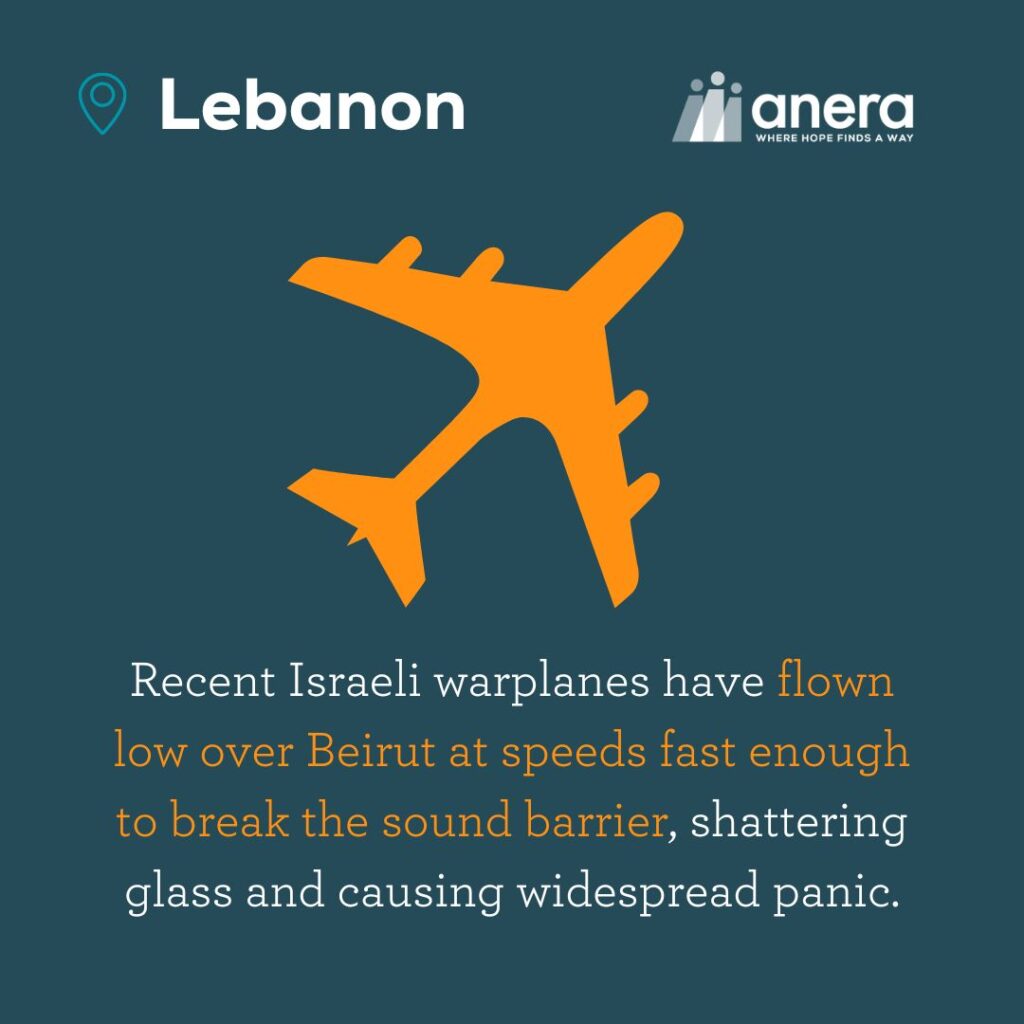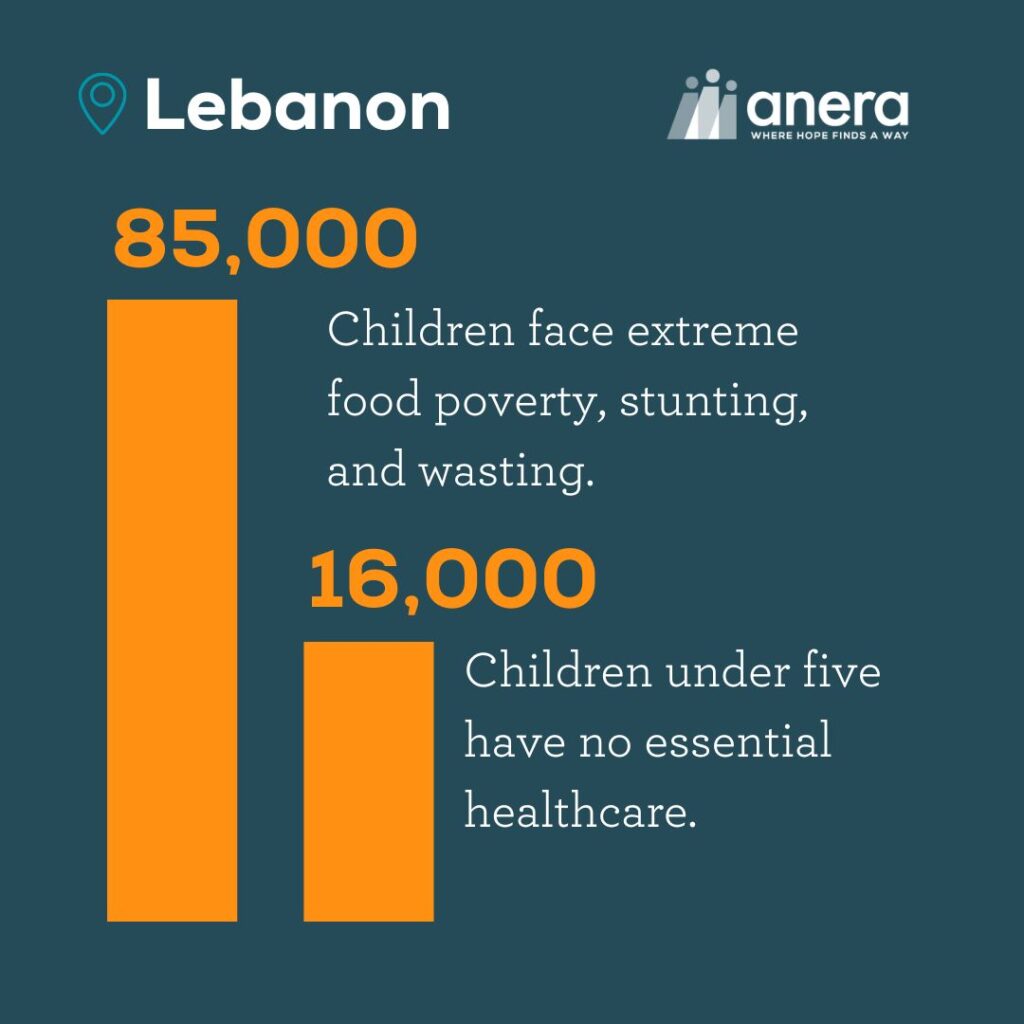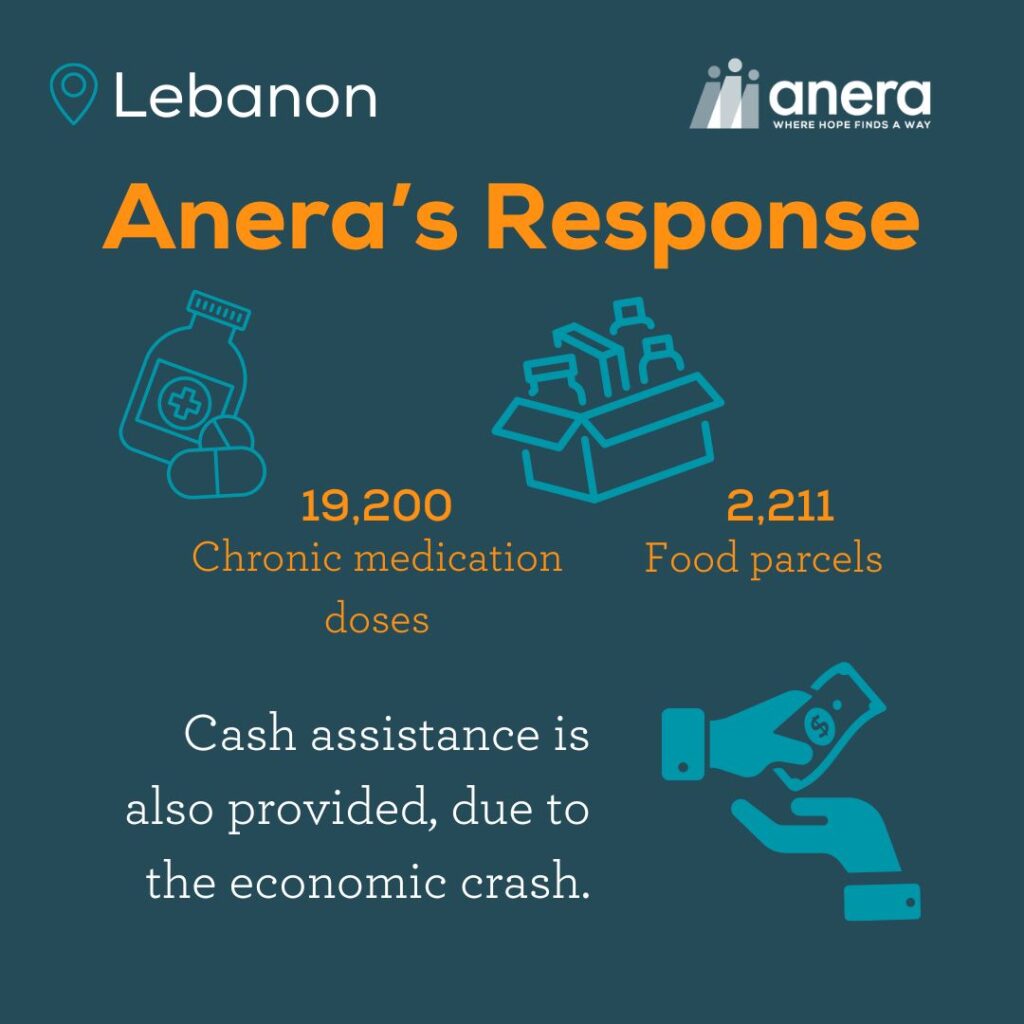Lebanon Situation Report | August 2024
Posted in: Report
For more information, including sources cited, read our full situation report. Find Anera’s full collection of situation reports here.
Between October 8, 2023 and June 25, 2024, Lebanon has experienced over 6,950 attacks involving airstrikes, drone strikes, shelling, artillery, and missiles. Israel produced approximately 85% of these attacks, and Hezbollah and other factions account for the remaining 15%.
Southern Lebanon’s water, electricity, telecommunications infrastructure, and roads have all suffered infrastructural damage as a result, and maintenance workers, medics, and first responders have all experienced casualties. Additionally, an increase of low-flying Israeli warplanes breaking the sound barrier has caused widespread panic and shattered glass in many residential buildings.


Violence at the Lebanon-Israel Border
On July 5, the UN warned of escalating tensions on the Lebanon-Israel Blue Line, which could lead to a full-scale war. All parties have been urged by the UN to cease hostilities and fully implement Security Council resolution 1701.
As of July 31, over 2,156 people have experienced casualties, with 515 people being killed from these attacks. More than 60% of Lebanon’s border communities have suffered damage, impacting over 3,200 buildings.
Shelter and Displacement
Since October 8, the conflicts have wholly and partially demolished 3,000 housing units, severely damaged 12,000, and minorly damaged 20,000. As of July 25, Lebanon reportedly had 98,750 Internally Displaced Persons (IDPs). Among them, only a small fraction — 1,341 — resided in collective shelters.
Syrian refugees in southern Lebanon, comprising 78,200 registered individuals as of March 31, face significant challenges such as arbitrary detention and deportation due to growing hostilities. Palestinian refugees across the South governorate, numbering about 250,000, are facing disruptions to essential services like education and healthcare due to safety concerns.


Food Security and Livelihoods
Lebanon’s economy has been broadly negatively impacted by the conflict. The agricultural sector has lost 17 million m2 of land due to Israeli shelling, mostly composed of white phosphorus. Farmers have been unable to harvest their crops due to the danger posed to their lives. In addition, the once-thriving tourism industry has ground to a halt, reducing income and costing people their jobs.
Food insecurity in Lebanon has worsened due to the hostilities and is projected to affect 1.26 million people, or a quarter of the population. Over 85,000 children are facing extreme food poverty and face severe stunting and increased risk of death.
Health and Healthcare Access
Between October 8, 2023 and June 30, 2024, at least 45 attacks against healthcare infrastructure in Lebanon have occurred, resulting in the deaths of 39 healthcare workers. As of June 27, six primary healthcare facilities were forced to close due to this insecurity. Now, 16,000 children under five have no access to essential health services.


Education Disruption
Due to insecurity and displacement, over 11,000 children in Lebanon have had their education disrupted. Schools have been damaged or converted into shelters, leaving students with formidable obstacles to accessing education. Attacks have disrupted exams, relocations have increased commuting difficulty, and online education is limited by poor internet services. These obstacles highlight the severe impact of conflict on educational continuity and student well-being.
Water and Sanitation
At least 13 water infrastructures have been damaged due to cross-border hostilities, affecting the water supply for nearly 200,000 residents in the South and Nabatieh. Overcrowding in shelters combined with lack of clean water and sanitation is leading to numerous health risks, such as gynecological diseases, diarrhea, cholera, typhoid, and skin and respiratory infections.
Anera’s Response
Anera implemented the Critical Access for Refugees to Medicine and Health Services (CARMAH) project for the third year, ensuring continuous access to chronic medications for refugees and vulnerable host communities in Lebanon. The program reached approximately 9,800 Syrians and 19,200 beneficiaries, with 74% being over 50 years old. A total of 2,211 food parcels have been delivered to 10,540 beneficiaries since October, with priority given to households with disabled family members and female heads. Since October, a total of $97,050 in cash assistance has been given to 9,705 vulnerable persons (1,941 households) to help them access critical basic needs amidst displacement and a halted economy in South Lebanon.


OUR BLOG
Related
In this log, Anera provides updates on unfolding war in Palestine and our response. Please stay tuned here for the latest information. Questions? See our FAQ page April 25, 2025 April 24, 2025 Today we again hosted a health clinic…
How contributions to Anera’s emergency fund can directly impact vulnerable families. With the horrors unfolding in Gaza and political upheaval in the U.S., it can be easy to overlook the escalating crisis in the West Bank. But we cannot and…
Mental Health and Economic Hardship in Lebanon The aftermath of the war in Lebanon and the continued Israeli strikes, compounded by years of political instability and economic collapse, has taken a devastating toll on its people, particularly its youth. The…
